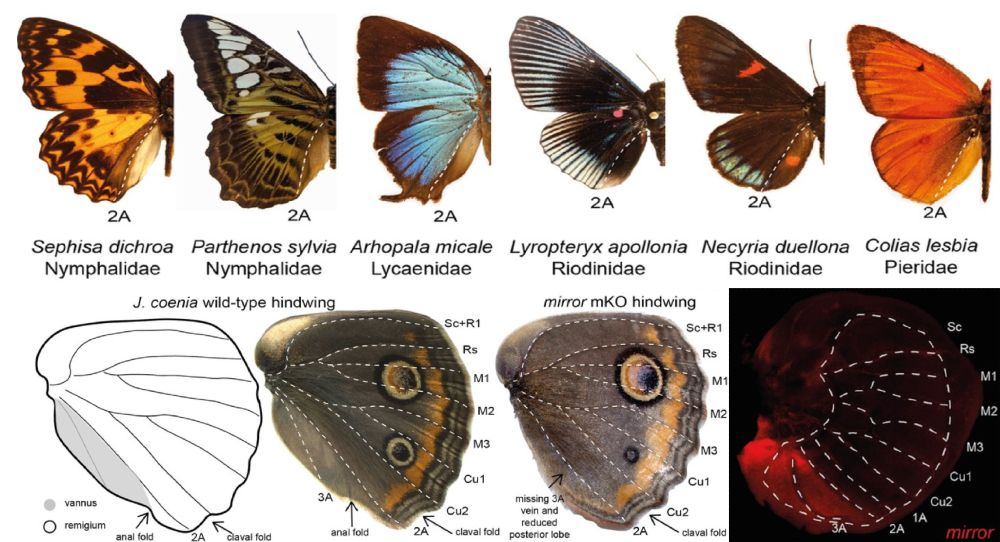
We discovered how the gene "mirror" is necessary for specifying the “vannus”, a unique domain in the posterior part of butterfly wings. 🦋🦋 (1/6)
#CRISPR #butterfly #genomics
@donyaniyaz.bsky.social
@lucalivraghi.bsky.social
High efficient, glowing eye and silk gland markers
peerj.com/articles/202...
@peerj.bsky.social
@donyaniyaz.bsky.social
@lucalivraghi.bsky.social
High efficient, glowing eye and silk gland markers
peerj.com/articles/202...
@peerj.bsky.social

We show that the iridescent colour of Morphos 🦋 tends to converge in sympatry while their chemical signals diverge, illustrating the constrasting effect natural and sexual selection on trait evolution.
doi.org/10.7554/eLif...

We show that the iridescent colour of Morphos 🦋 tends to converge in sympatry while their chemical signals diverge, illustrating the constrasting effect natural and sexual selection on trait evolution.
doi.org/10.7554/eLif...

Led by Sarah Khalil, we took a genomic approach to investigate the hybrid zone between different-colored Red-backed Fairywren subspecies. We found some interesting candidate genes under selection. Check it out! academic.oup.com/evolut/advan...

Led by Sarah Khalil, we took a genomic approach to investigate the hybrid zone between different-colored Red-backed Fairywren subspecies. We found some interesting candidate genes under selection. Check it out! academic.oup.com/evolut/advan...
We find the fly development gene bicoid is much older than previously thought (~20 million yrs older!) 🪰🧬
To pinpoint its origins we tackled the Diptera phylogeny, providing some resolution (many open questions remain).
🔗 tinyurl.com/2vyuevpy
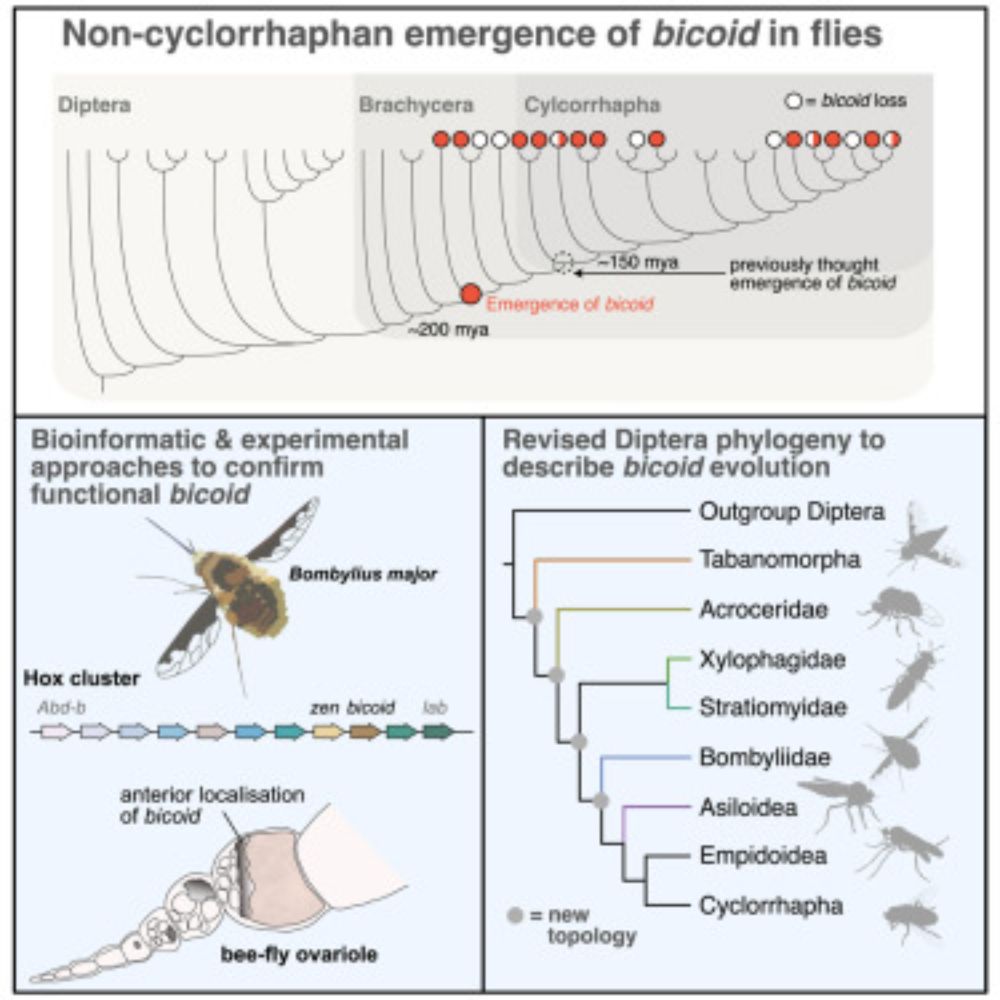
We find the fly development gene bicoid is much older than previously thought (~20 million yrs older!) 🪰🧬
To pinpoint its origins we tackled the Diptera phylogeny, providing some resolution (many open questions remain).
🔗 tinyurl.com/2vyuevpy

www.biorxiv.org/content/10.1...

www.biorxiv.org/content/10.1...
royalsocietypublishing.org/doi/10.1098/...
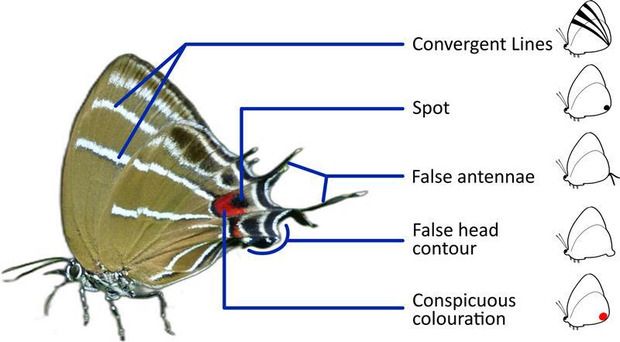
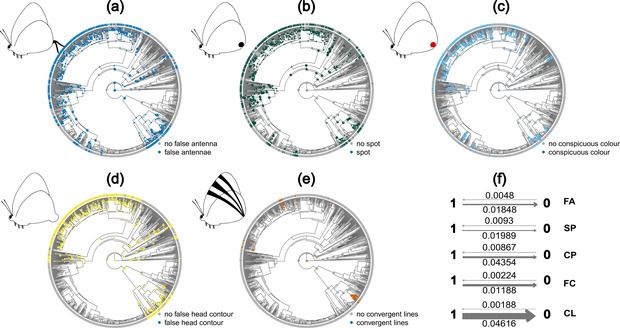
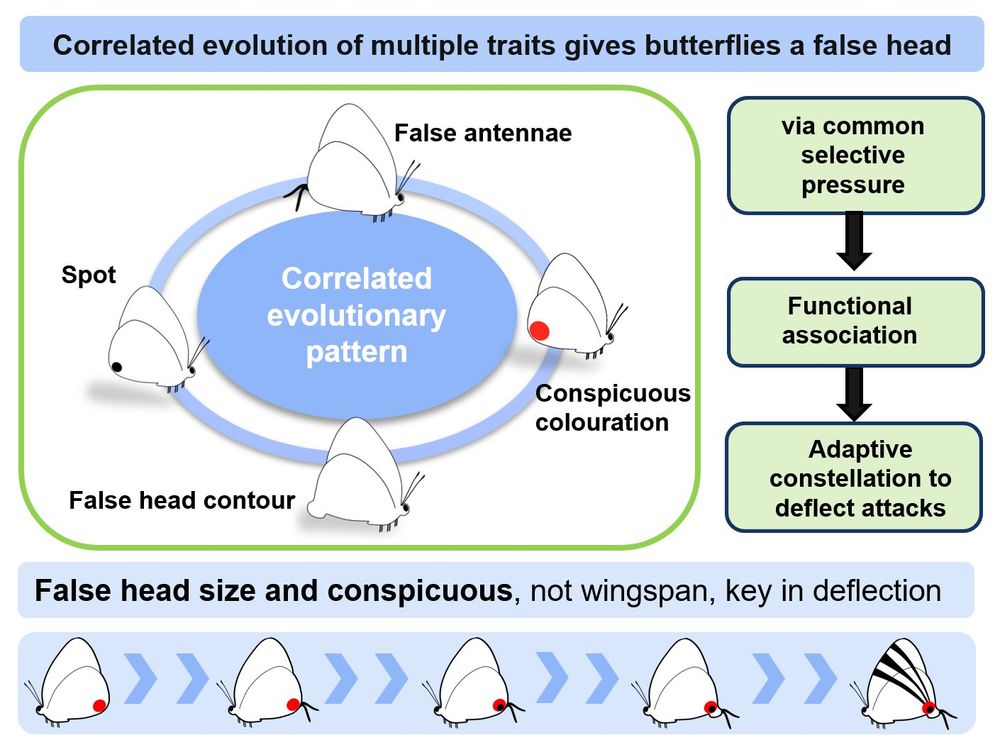
royalsocietypublishing.org/doi/10.1098/...
We discovered how the gene "mirror" is necessary for specifying the “vannus”, a unique domain in the posterior part of butterfly wings. 🦋🦋 (1/6)
#CRISPR #butterfly #genomics

We discovered how the gene "mirror" is necessary for specifying the “vannus”, a unique domain in the posterior part of butterfly wings. 🦋🦋 (1/6)
#CRISPR #butterfly #genomics
Our latest work in Cell led by @vdeneke.bsky.social & Andreas Blaha reveals a conserved fertilization complex that bridges sperm and egg in vertebrates! (1/11)
www.cell.com/cell/fulltex...

Our latest work in Cell led by @vdeneke.bsky.social & Andreas Blaha reveals a conserved fertilization complex that bridges sperm and egg in vertebrates! (1/11)
www.cell.com/cell/fulltex...
2 year, full-time PD in my group, Stockholm Univ.
Applications assed on rolling basis, deadline: 23 August 2025. Planned start 1 Oct.
Details:
christopherwheatlab.wordpress.com
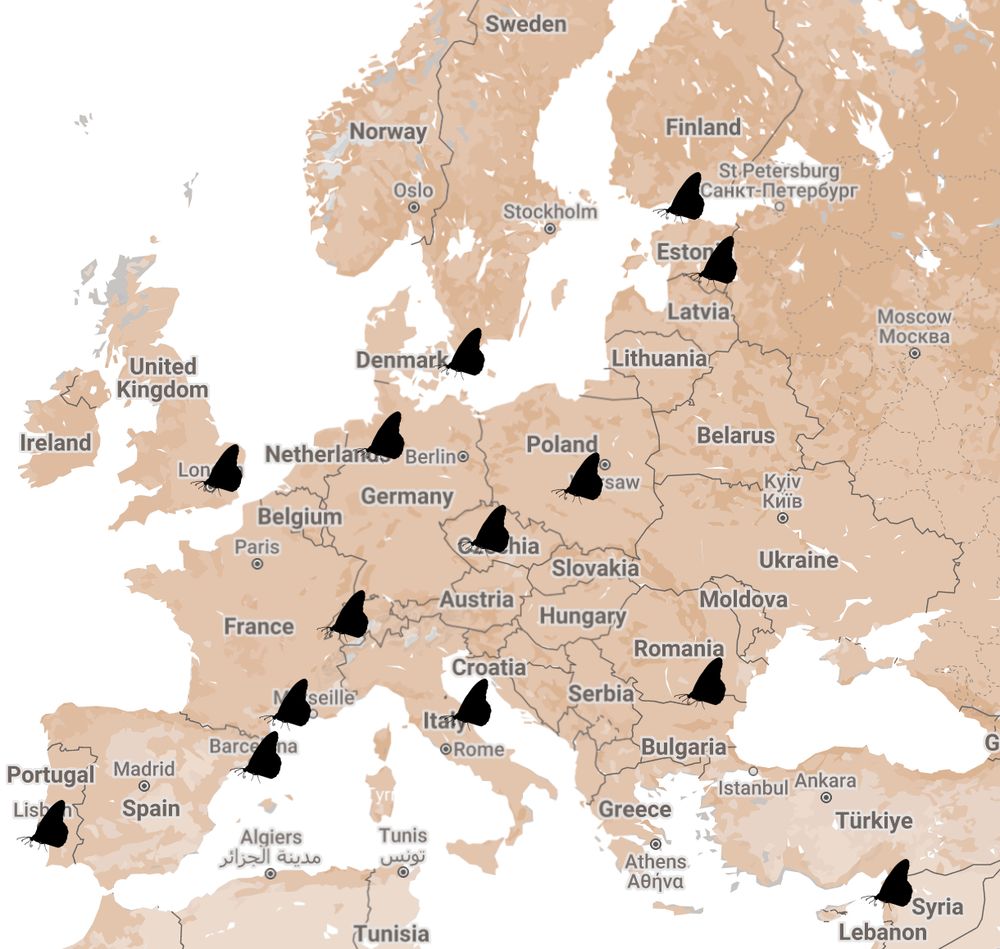
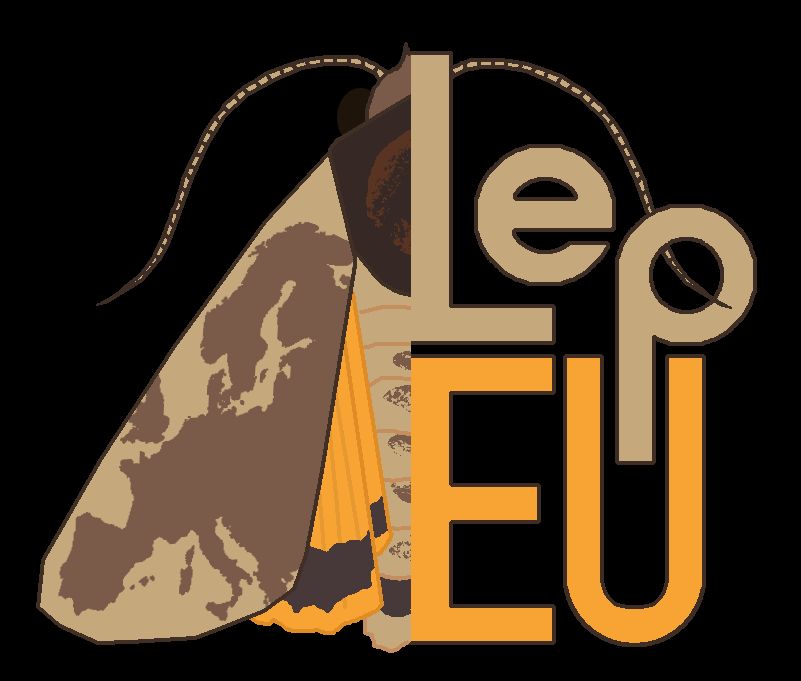
2 year, full-time PD in my group, Stockholm Univ.
Applications assed on rolling basis, deadline: 23 August 2025. Planned start 1 Oct.
Details:
christopherwheatlab.wordpress.com
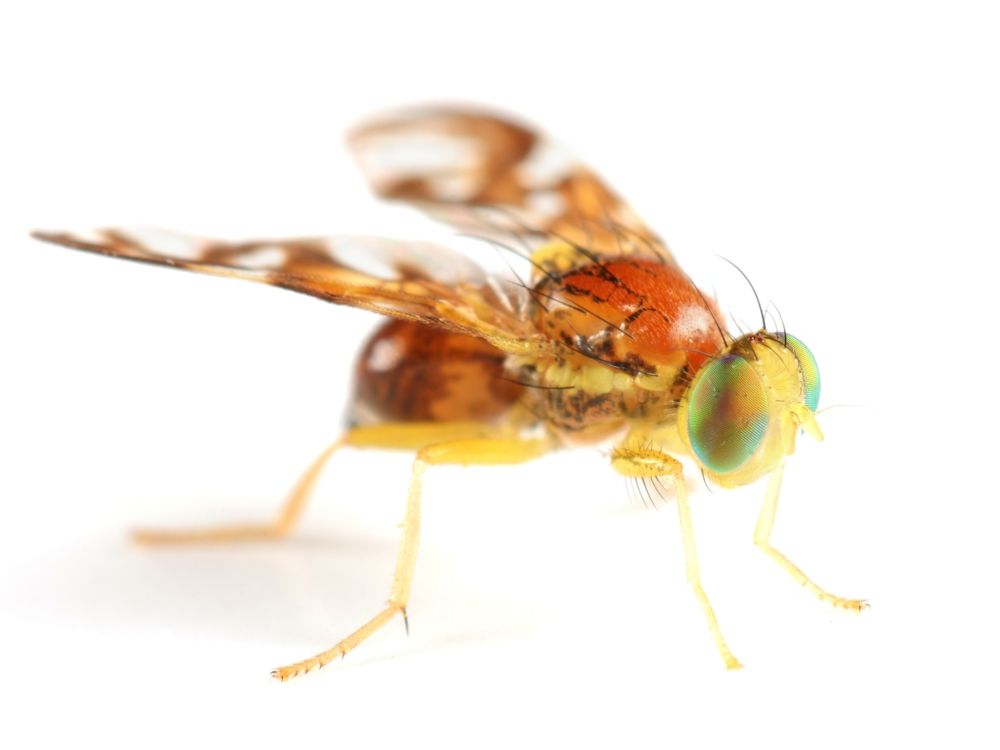
by lab wizards 🦋🔬 🖥️ 🧬
Ling Sheng Loh
@hanliconius.bsky.social
and a big team
1/n
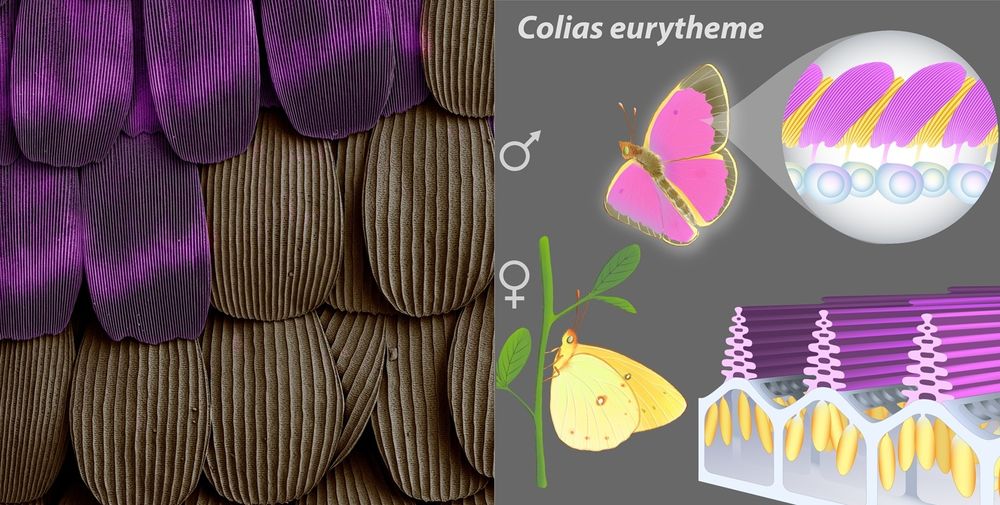
by lab wizards 🦋🔬 🖥️ 🧬
Ling Sheng Loh
@hanliconius.bsky.social
and a big team
1/n
🧪🌎
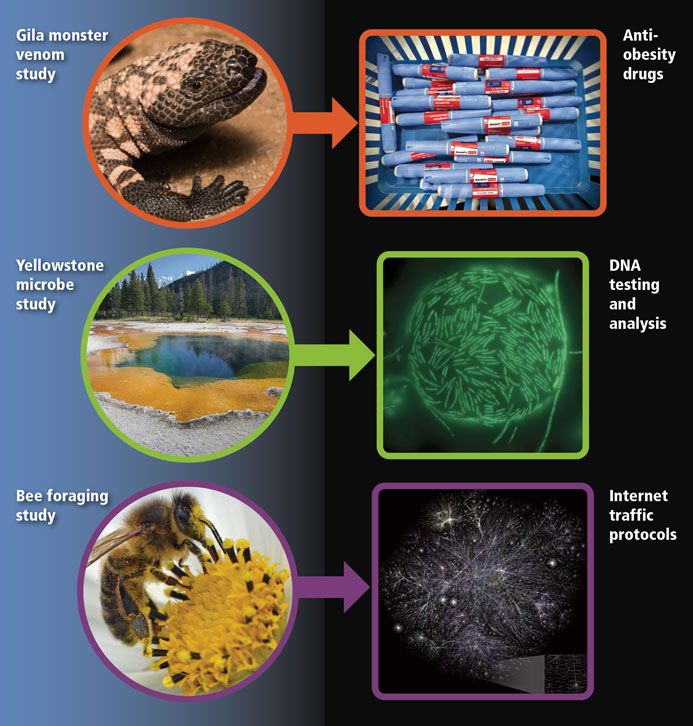
🧪🌎

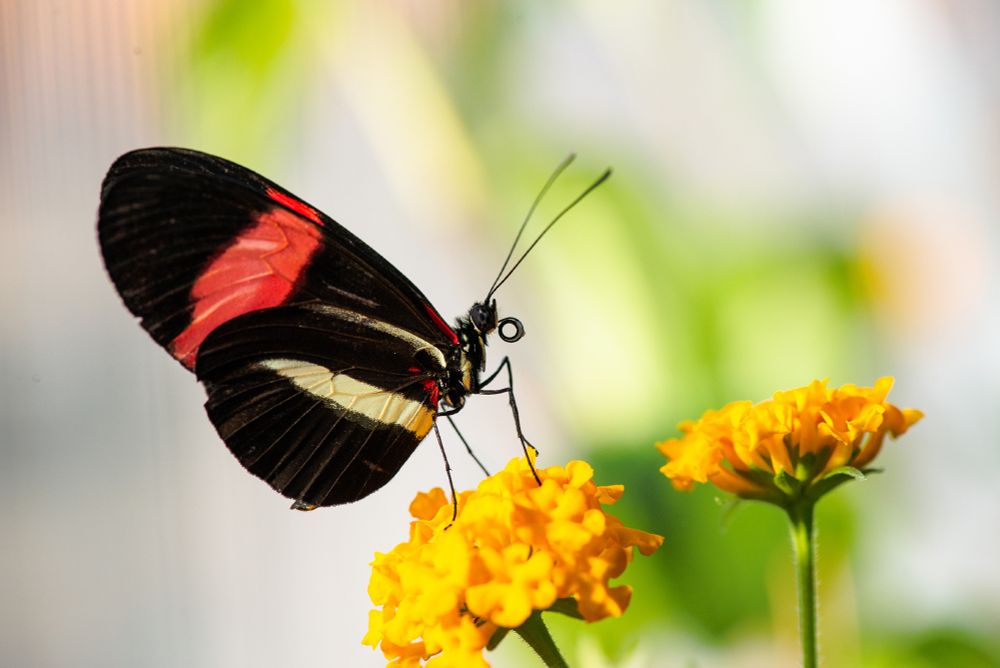
Imagine if this was today , how many people would be saying “Why are we studying Gila Monsters and their impact on diabetes ? That’s wasted money !”
globalnews.ca/news/9793403...
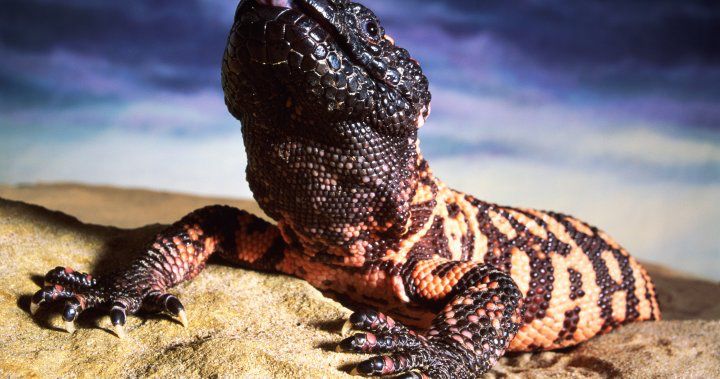
Imagine if this was today , how many people would be saying “Why are we studying Gila Monsters and their impact on diabetes ? That’s wasted money !”
globalnews.ca/news/9793403...
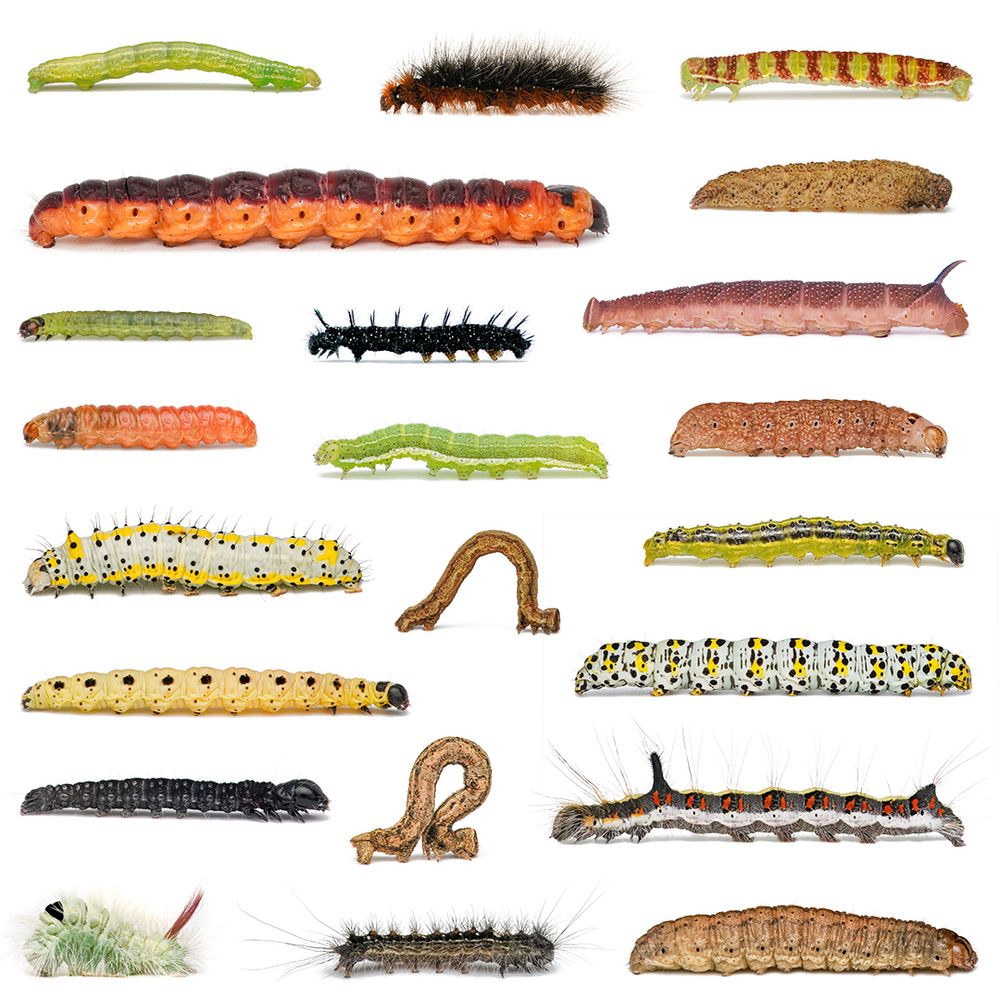


www.science.org/doi/10.1126/...
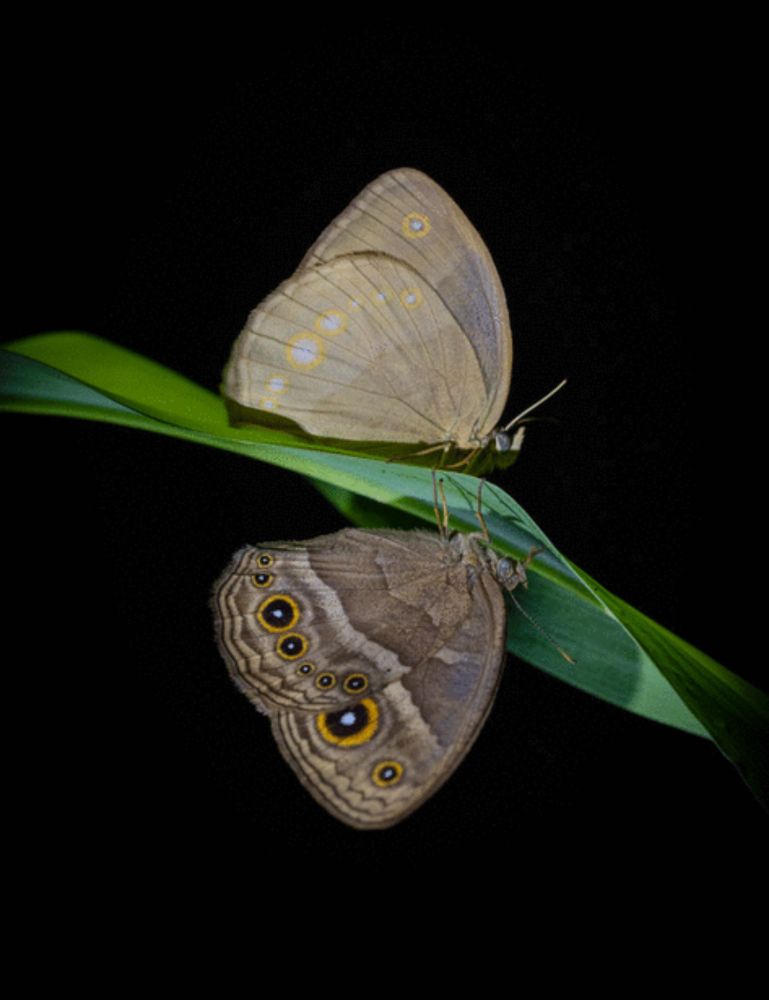
www.science.org/doi/10.1126/...


